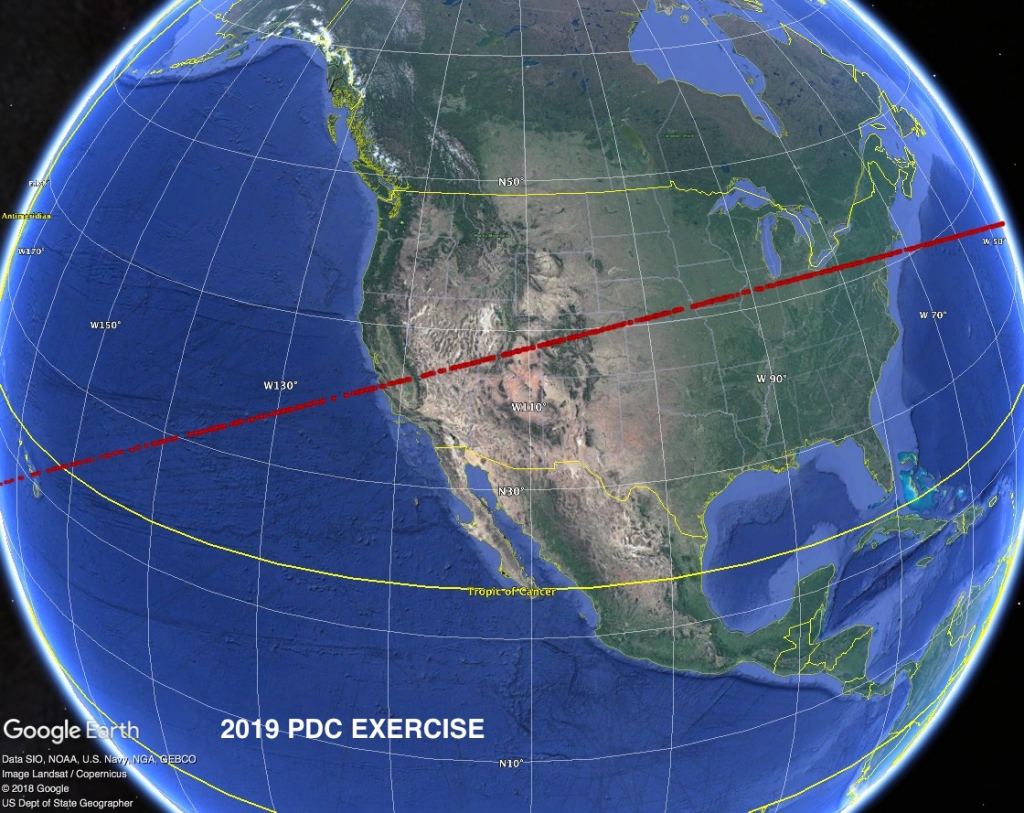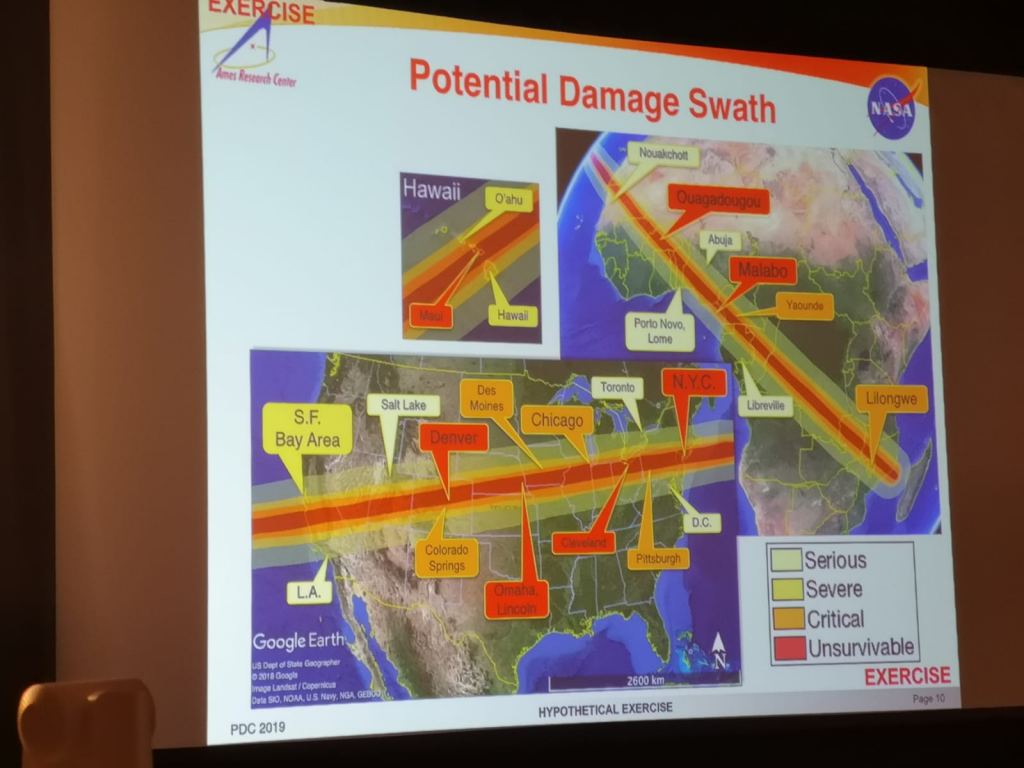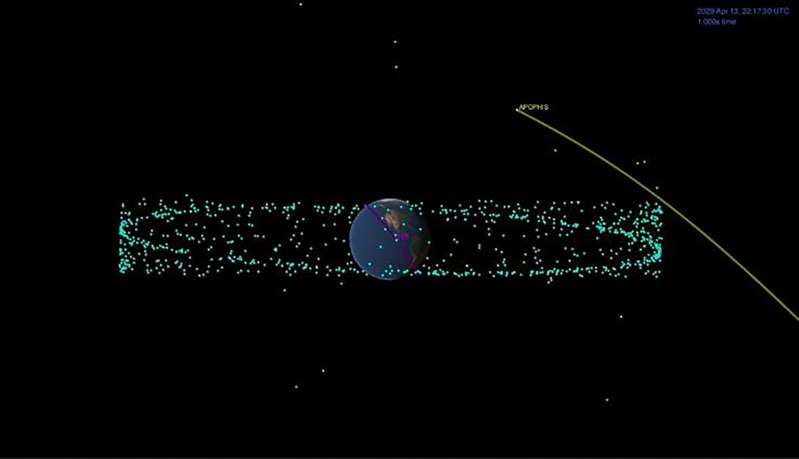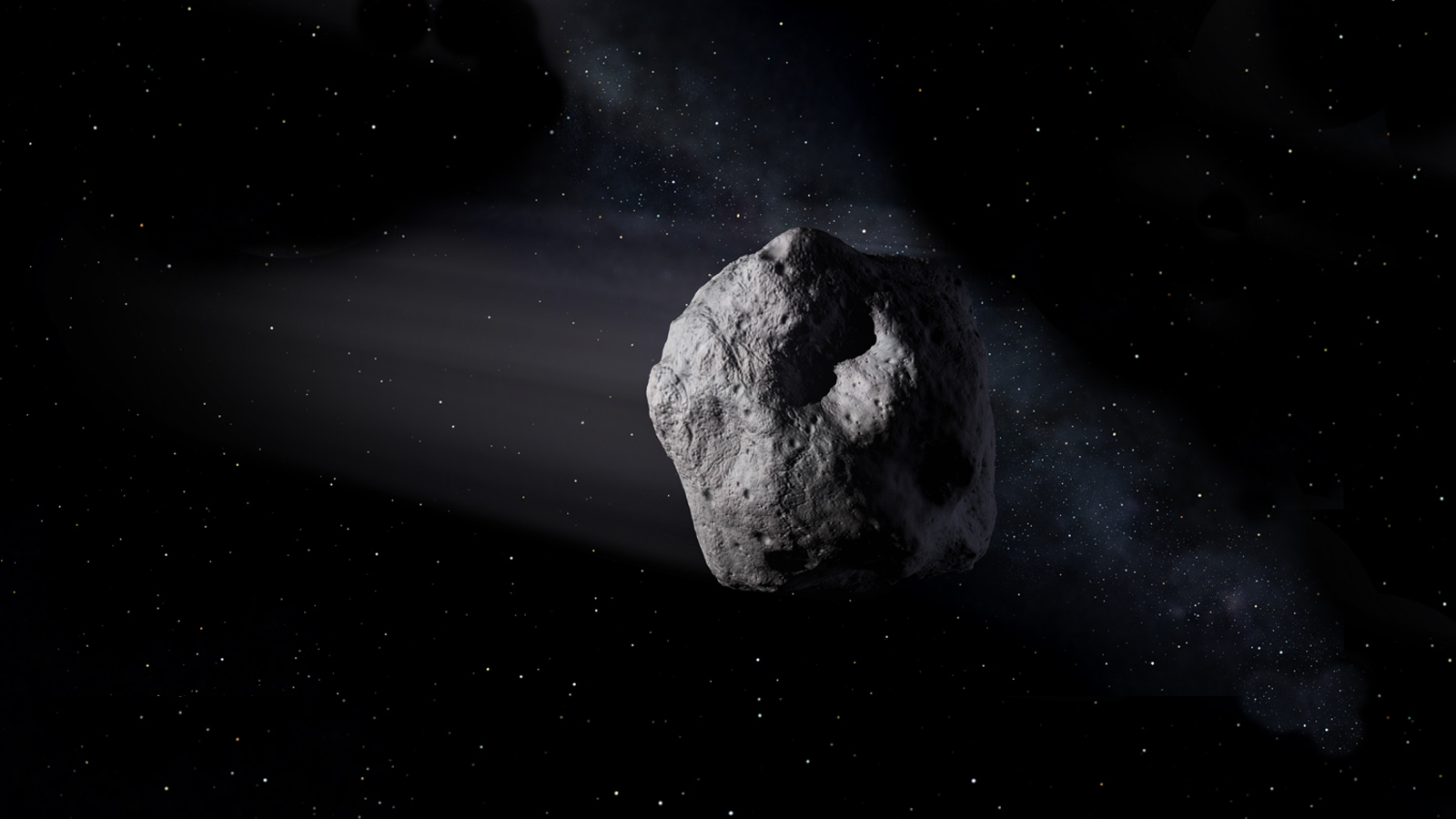Remember when Orson Welles’ 1938 radio show called “The War of the Worlds” fooled people into thinking that Earth was actually being invaded? That was fun.
Now, the ESA (European Space Agency) is tempting fate by live-tweeting the hypothetical approach of the hypothetical asteroid 2019PDC and hypothetically planning a hypothetical response to this hypothetically destructive asteroid. In their hypothetical scenario, 2019 PDC has a 1 in 10 chance of striking Earth in 2029. And you can follow the action on Twitter.
The ESA is using the 2019 Planetary Defense Conference in Washington from April 29th to May 3rd as a platform for their hypothetical exercise. Though it’s tempting to be a little humorous about the whole thing, at the heart of it is serious science. Asteroids have struck Earth in the past, with devastating consequences, and it’s a certainty that more will strike Earth. Shouldn’t we prepare ourselves and mount some kind of defense? We should, and we are.
The hypothetical 2019PDC asteroid bears a striking resemblance to an actual asteroid that is heading Earth’s way, with the hand-wringing name of Apophis. Apophis is the ancient Egyptian God of Chaos who was usually represented by a serpent. But in this case, a massive chunk of rock is standing in for the serpent.
Like the hypothetical 2019PDC, Apophis will also make its closest approach to Earth in April, 2029. And though Apophis has a much lower chance of striking Earth than the fictional 2019PDC, it’s a good opportunity to raise our asteroid preparedness game for the eventual approach of an Earth-striking asteroid.
There’s an international consortium of space and science agencies organizing humanity’s response to an incoming asteroid. The consortium is called the International Asteroid Warning Network (IAWN) and includes NASA, the ESA, the CNSA (China National Space Administration) and a variety of other observatories and institutions around the world.
In the current hypothetical scenario, daily press releases announce the growing odds of the asteroid striking Earth. The asteroids size is constrained and its potential impact sites are narrowed down.

When it comes to the real asteroid, Apophis, we don’t actually have much to worry about, even though it will likely come closer to Earth than some of our satellites. Apophis is actually a great scientific opportunity to study an asteroid up close and personal. Depending on where you live, you might even be able to see it.
“The Apophis close approach in 2029 will be an incredible opportunity for science,” Marina Brozovi, a radar scientist at NASA’s Jet Propulsion Laboratory (JPL) in Pasadena, California, said in a statement. “We’ll observe the asteroid with both optical and radar telescopes. With radar observations, we might be able to see surface details that are only a few meters in size.”

“We already know that the close encounter with Earth will change Apophis’ orbit, but our models also show the close approach could change the way this asteroid spins, and it is possible that there will be some surface changes, like small avalanches,” Davide Farnocchia, an astronomer at JPL’s Center for Near Earth Objects Studies (CNEOS), said in the same statement.
For a short time, Apophis will be visible with the naked eye. It’ll soar over Australia and the Atlantic Ocean before travelling over the west coast of North America by evening. Scientists will get a close look at it and will try to learn something about its size, composition, and surface features.
Apophis was first discovered in 2004, and it has a less than 1 in 100,000 chance of striking our planet. But its close approach is not only a scientific curiosity: it’s a chance to fine-tune our preparedness and response to a real asteroid strike.

“Apophis is a representative of about 2,000 currently known Potentially Hazardous Asteroids (PHAs),” Paul Chodas, director of CNEOS, said in a statement. “By observing Apophis during its 2029 flyby, we will gain important scientific knowledge that could one day be used for planetary defense.”
It’s heartening to see an organized response to an existence-threatening event like an asteroid strike. You can see how agencies around the world can use our communications systems to cooperate and coordinate a response to something as potentially devastating as an asteroid strike, which could cause mass extinctions and even the end of our civilization.
Too bad we can’t do more of the same for climate change.

